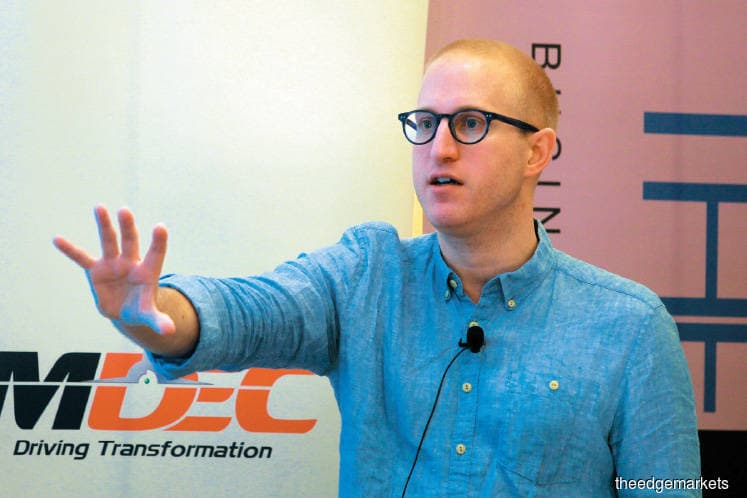
This article first appeared in The Edge Financial Daily on November 20, 2017
It is rare for large corporations to go about innovating in the right way, says Jordan Schlipf, partner at Rainmaking Innovation. Typically, they have no clear strategy to deploy innovation and make no effort to measure outcomes in any meaningful way.
“When it comes to the need to innovate, the corporations’ first response is to
create a corporate venture capital fund, park US$50 million to US$100 million there and consider the problem solved.
“If not, they would take to acquiring available innovative start-ups — we have seen waves in the Silicon Valley where these corporations act like little kids in a candy store with their father’s credit card, buying all the technology businesses. The results have been pretty terrible, [leading to] nosebleed valuations,” he says.
Schlipf says others go the way of internal programmes — using hackathons, accelerators, incubators and innovation garages — all without understanding the purpose of such programmes or how to employ them in the most effective way.
The problem, he says, is that there are no communicated sets of best practices of what works in terms of creating a robust innovation strategy. There are no reputable models that can be deployed to generate the results.
Additionally, most corporations do not have the capabilities to properly determine whether the investments made in acquiring or collaborating with start-ups would create commercial value.
“The thing is, the investment committee or decision-makers do not actually know how to judge the ideas because they love to play Dragons’ Den or Shark Tank — accepting and rejecting like they are judges in TV shows. They have no idea how to evaluate something at a nascent stage,” says Schlipf.
To solve this problem, he introduces Innovation Compass — an innovation strategy tailored for application in each business unit that is parallel to the company’s overall strategy. He explains that the Innovation Compass is about navigating disruptions, identifying possible directions of growth before they become obvious and creating structures to enable corporations to explore new business models while continuing business as usual.
“We think of corporate innovation as a war that is formed on two fronts. One is executing your core business to get you money today and two, exploring future growth opportunities and navigating uncertainty. Thus, large organisations need to stop thinking of themselves as a single, monolithic organisation with one business model.
“The incumbents competed with their competition through project managing, stripping out costs and de-risking because they all had the same business model. Today, however, the biggest units of competitiveness are new business model shifts within the existing industry. That is why they need to think of themselves as ambidextrous organisations that are executing and, at the same time, exploring to have multiple different business models within the same industry,” says Schlipf.
The Innovation Compass powers the Engines of Growth, which is the mix of activities needed to navigate the changing landscape and create real commercial value from the corporations’ innovation approach, Schlipf explains. This requires balancing focus across an Internal Innovation Framework, comprising structured pilot programmes, to collaborate with start-ups and venture development.
As the portfolio approach to innovation strategy is data-driven, Rainmaking Innovation uses external disruption mapping of start-up activity in the area to determine the opportunities available to the corporations. “We love to use groupings of start-ups as a signal because by definition, they are both tech and business model innovation combined. There are a lot of things that we analyse to create disruption mapping — we look at their maturity, venture capital trends and the deep dive technology being applied. Additionally, we also look at their density — the rate of emergence, death and survival, among others.
“In essence, disruption mapping allows us to answer the first point of the corporations’ investment thesis — where the world is going, and what sort of business will succeed. Where we believe the value will be — whether it is in the customer journey, value chain or tech stack — will all be based on market data, not ideation or gut intuition,” says Schlipf.
Rainmaking Innovation also does capability assessments to complete the thesis. It will analyse the current capabilities that the corporations have — their assets, infrastructure and resources. Coupled with the information gathered from the disruption mapping, the company can determine the opportunities of start-ups that are able to complement or complete the corporations’ capabilities to get the desired results.